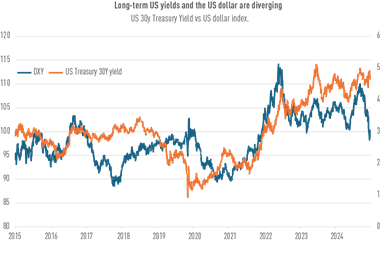Any global investor in alternative assets often looks at Asian managers and tries to identify the opportunities that are different than those being undertaken by their current global managers. One of the perceived opportunity sets is often referred to as “special situations” which is a rather broad and ill defined term. What it generally refers to is the less liquid credit space that is a combination of “secondary” distressed credits and “primary” highly structured secured lending. It also occupies a world somewhere between that of hedge funds and private equity.
The reason for secondary distressed credits is fairly obvious due to classic credit cycles, especially after periods of excess and easy credit. If we take a brief look round the Asian region we could summarise the credit cycle as follows:
Japan is still in a real estate-related distressed cycle after a period of easy non-recourse credit was provided to the real estate funds and CMBS. Despite the poor sovereign balance sheet, most of corporate Japan and household Japan are cash rich after a 20 year deleverage cycle. Non-real estate distressed opportunities will tend to be very event driven due to some unusual characteristics of the market. Credit skills in Japan are still developing as a result of which there is a strong reliance on rating agencies. Most investors only buy investment grade credit and there is no natural market for high yield. Typically, if a bond is downgraded from investment grade it can fall 30-40 points.
China is not at the point of Armageddon in the credit cycle as many fear. The lending binge following the financial crisis was largely due to liquidity priming of local government and state owned enterprises. Many are of the opinion that even if the aggregate lending to these groups were added the sovereign balance sheet, China would still be in reasonable shape. However, one side effect of the credit binge was a real estate bubble and there is vulnerability here. Even as the government moves into an easing cycle, they still seem intent on curbing real estate prices. Another side effect is the policy of broad administrative measures to curb bank lending. This effectively cut off funding to the small and medium-sized companies sector. However, we expect some shift and there will be policy support in this area. China has started into an easing cycle but it is in a credit cycle which is still deteriorating, although this is largely created due to their policy goals of curbing growth to control inflation. They are likely to free up credit if they look to be overshooting these goals, although this can still create a reasonable amount of distress.
ASEAN is in fairly good shape in terms of its credit cycle but is still poor from a corporate governance perspective. Therefore, distressed opportunities will be more idiosyncratic event driven.
India looks to be at a vulnerable point in the credit cycle. India has struggled with internal efficiencies to get inflation under control and rates have been forced up much higher than the rest of the region. Many companies are now struggling under mid-teen interest rates. While easing is in the offing, India may not be able to avoid a deteriorating credit cycle with considerable distress.
Australia is a fairly complex mix but for varying reasons the credit cycle is deteriorating. It was the only area in Asia Pacific to have LBOs which is one obvious area of distress. The banking system is heavily reliant on wholesale funding; this makes it vulnerable to contagion as global banks seek to reduce their balance sheets. Global banks have also had significant lending books in Australia they are now looking to reduce. This has created an environment of funding being cut off to SMEs and significant refinancing risk across the board. Australia has specific issues caused by its exposure to demand in the resource sector and the corresponding inflationary impact. There is limited room to cut rates which has kept the currency very strong, and this has had a significant impact on the non resource sectors. Retail is deteriorating very fast and this will have a knock on effect on commercial real estate.
The reason that “primary” highly structured secured lending exists is a little more complex. When we look at the countries in Asia, they can be split into the ones with strong creditor rights and established processes of enforcement and those in the other category. The strong group would include countries like Japan, Australia, Hong Kong and Singapore. The weaker group would include China, India and most of ASEAN.
There is also the issue surrounding onshore versus offshore structures. In some countries onshore creditor rights are reasonable but offshore creditors end up highly structurally subordinate. Even where offshore secondary debt is trading at very distressed prices, due to poor enforcement rights or mechanisms, many experienced managers are reluctant to buy these and instead opt to structure a new “primary” transaction with strong onshore collateral or alternatively, liquid offshore collateral.
Another common characteristic of the weak creditor right countries is the inability to get rid of the owner which is often the government or an established family even where technically the creditor should be senior. Through bitter experience most managers prefer to structure a “win win” deal where they have effective control through collateral and covenants but the original owner is incentivised to regain control of the business. Many managers prefer to refinance with a proper onshore structure, that aligns interest with the owner, and buy back the offshore deal cheaply.
Not all structured lending is distressed. Structured lending often used to finance growth when the banks are not prepared to lend. Despite the fact that most Asian countries have excess liquidity in their banking systems, access to loans can be difficult. As is currently happening in China, the banks have been restricted from lending; lending is being made through a quota system especially in the property sector. Banks can also find it difficult to provide finance in areas such as acquisitions and the resource sector. Asia still tends to provide too easy credit to SOEs and the established names and be slow to support SMEs.
There is no generic structure but most try and follow the broad principles:
Alignment of interests
Local legal structure
Proper perfection of collateral, which can go as far as taking physical ownership with a right of the borrower to buy back
Multiple sources of collateral
Use of escrow accounts
Control of key property such as statutory documents and chops
Most deals are in the 1 to 3 year maturities. Most will be targeting IRR of greater than 20%, though the coupon may initially be lower. Most are structured to incentivize early redemption, even though it is at a premium. Many have an equity warrant, as in events of early redemption the loss of spread will be compensated by equity upside. Most tend to be heavily over collateralized, especially on less liquid collateral.
It is also typical to exit the deals through asset sales, cash flow or refinancing from banks once a complex situation has been regularised. Stock market exits are generally not reliable. However, the healthy loan deposit ratio of the regions banks does support longer term refinancing. Deals do need to be actively monitored as when things go wrong it is important to take control of the assets quickly. Ultimately a safe exit is a function of ensuring the debt is right sized at inception for the underlying assets and cash flow generating ability of the company.
We think the opportunity looks attractive for the relatively small number of focused players in this area. We see significantly less competition from many sources. Prior to 2008 most of the large investment banks in the region had multibillion dollar portfolios which are now largely inactive on new deals. The global multi strategy funds, were also significant pre 2008, have largely refocused back to their more liquid core businesses. Even the global distressed managers are limited to a degree as there is a reluctance to get involved in the weak creditor rights markets. They may venture into the more developed part of the opportunity set in Japan and Australia, although most are more focused on Europe at present. This improves negotiating power for both buying secondary distressed opportunities and primary structuring.
From a supply perspective we expect strong deal flow. European banks are clearly moving into balance sheet reduction mode and we expect them to shed noncore assets such as Asia. Another driver is the ongoing cautiousness of the banking sector and a very difficult financing environment, yet still plenty of growth opportunities. There is still some fall out to come from the current slow down even without a hard landing.
When most investors consider Asia, they have to accept the fact they will almost always be a minority to some controlling government or family. Investing in distressed and private secured transactions is one of the few times an investor can get some form of effective control.
One characteristic of the asset class is the way it falls between hedge funds and private equity. Being an IRR focused product it is a more natural fit with hedge fund investors but the maturity profile does not suit a classic quarterly liquidity hedge fund. The shorter maturity and lower multiple on invested equity makes it less natural for many private equity investors, yet structurally it needs a vehicle with private equity characteristics. Post 2008 investors are very sensitive to matching fund liquidity terms with portfolio liquidity terms.
The solution has been a number of hybrid structures. We could split them in to 2 basic groups:
Hedge fund hybrids - There are two ways to address the liquidity issue. Redemptions can be spread over a number of years using investor level gates or redemptions can go through an orderly sell down process like private equity. Realisation of manager’s fees will often be more aligned with the effective maturity.
Private equity hybrids - The basic structure is very similar to classic private equity. Capital will tend to get invested quicker, there will be a short investment period, often around 3 years but reinvestment will be allowed for short term gains. The recycling of capital increases the overall equity multiplier. Final maturities are around 5 to 6 years.
As hedge fund structures may allow redemptions and fees based on an NAV, valuation is a key issue. Even private equity structures may have to deal with multiple closes on underlying assets that can perform in the shorter term. This has helped support the growth of many independent valuation service providers, in addition to the fund’s auditor.
In summary, while there may be a more obvious distressed opportunity set in much of the western world, Asia does have its own more eclectic opportunities. In a world of such low interest rates, the risk reward is attractive and the asset class complimentary to a global portfolio.


























No comments yet